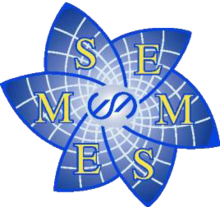Elegant Fractals
This book is much like the previous one Elegant chaos. Algebraically simple chaotic flows (2010) by this author. There Sprott investigates all sorts of dynamical systems and their chaotic behaviour. By elegant chaos he means the simplicity, symmetry,... of the formulas describing the system. In the current book with subtitle Automated Generation of Computer Art, it is all about the graphical representation, and elegant now refers to what one could define as an aesthetic pleasing graphic. Moreover, this elegance is defined by investigating certain properties of the dynamics that can automatically be optimized by the software to produce the probably most pleasing results.
So the book starts with some technical definitions of chaos, iteration, basin of attraction, etc. It is explained how to deal with resolution by manipulating the pixels. Artificial variables can be used to add shadow (giving a 3D effect), and to add colour while the original dynamics of the system are maintained. Thus, even for dynamics in the plane, one ends up with six variables (three for space, and three for colour). Next several properties can be evaluated: the probability of generating chaotic behaviour for varying values of the parameters, the probability of clusters, and characteristic indices like Lyapunov exponent, Kaplan-Yorke dimension, correlation exponent, etc. An artificial neural network can then be taught to automatically select the most interesting graphics.
In subsequent chapters several ways of generating the dynamics that will produce fractals are considered with variations on how to influence the graphical result by changing formulas or parameters, or the way of colouring, how to introduce symmetry, clustering etc. These chapters are dealing with iterated maps, chaotic flows (in fact continuous systems discretized using a simple Euler rule), iterated function systems, escape-time plots (think of Julia sets), spatio-temporal systems (e.g. cellular automata, or differential equations), random fractals (the graphics of random number generation and stochastic systems), and fractal tessellations.
An epilogue, describes briefly the software that is downloadable from the author's web page both in a PowerBASIC source format or as a Microsoft Windows executable. There you can also find all the graphics of the book in png format. The graphics can be named uniquely using one letter for the type of the generating process followed by 12 letters that indicate what value is taken for the parameters (there are at most 12 parameters that can take no more than 26 different values).
The focus of the book is purely on the graphics, and not the mathematical analysis of the dynamics, nor the physical interpretation, or the numerical solution. For example that a continuous system is approximated by a simple Euler rule is of no importance since the purpose is to generate interesting graphics and not an accurate solution. Nevertheless, links to the literature are often provided where these systems do get their interpretation, or where they are studied from a more mathematical or numerical side. So this book should be considered as an effort of bridging the gap between mathematics and art, although it is still very technical and automated. Whether true aesthetics criteria are used is disputable. Thus it may not be well appreciated by the artist and it may not be taken seriously by the mathematician. However, it may force the art critique to be more precise about why he or she thinks one picture is more beautiful than another, and it may invite mathematicians to investigate on a more mathematical basis what is observed here experimentally driven by graphical arguments.
